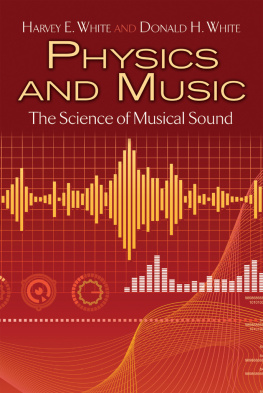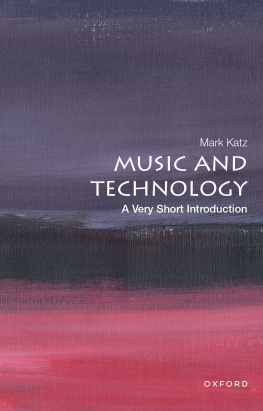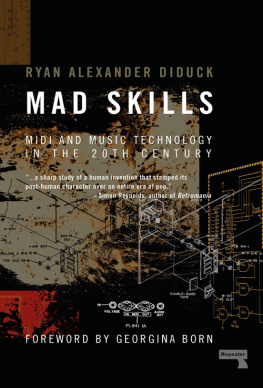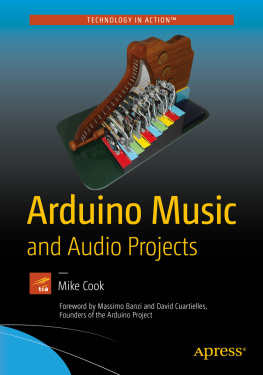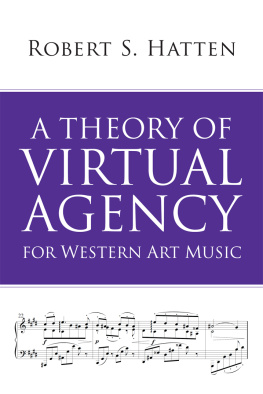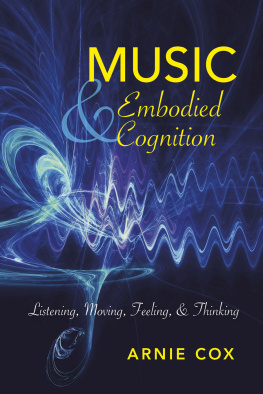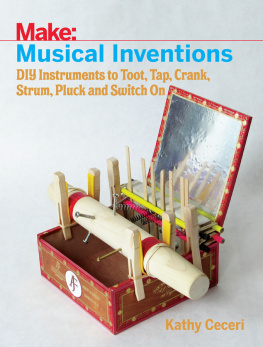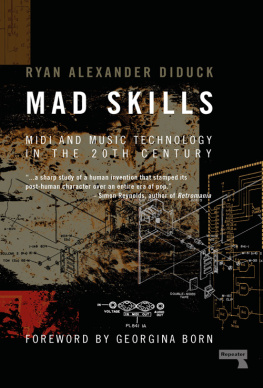Contents
List of Figures
List of Tables
Guide
Pagebreaks of the print version
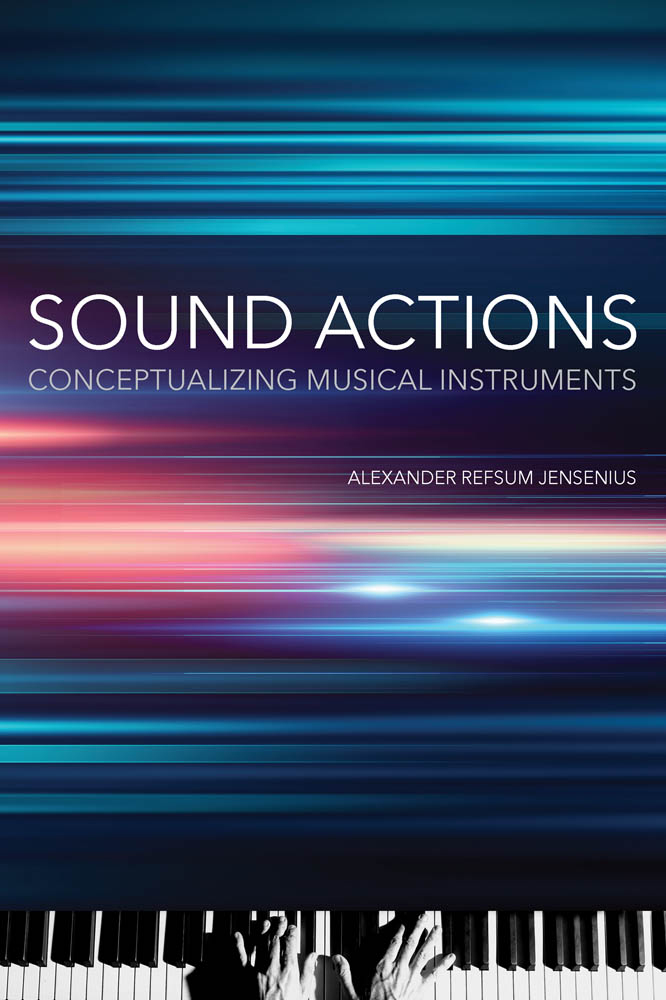
Sound Actions
Conceptualizing Musical Instruments
Alexander Refsum Jensenius
The MIT Press
Cambridge, Massachusetts
London, England
2022 Massachusetts Institute of Technology
This work is subject to a Creative Commons CC-BY-NC-ND license.
Subject to such license, all rights are reserved.

The MIT Press would like to thank the anonymous peer reviewers who provided comments on drafts of this book. The generous work of academic experts is essential for establishing the authority and quality of our publications. We acknowledge with gratitude the contributions of these otherwise uncredited readers.
Library of Congress Cataloging-in-Publication Data
Names: Jensenius, Alexander Refsum, author.
Title: Sound actions: conceptualizing musical instruments / Alexander Refsum Jensenius.
Description: Cambridge: The MIT Press, 2022. | Includes bibliographical references and index.
Identifiers: LCCN 2021062387 (print) | LCCN 2021062388 (ebook) | ISBN 9780262544634 (paperback) | ISBN 9780262372206 (pdf) | ISBN 9780262372213 (epub)
Subjects: LCSH: MusicPerformancePsychological aspects. | MusicPsychological aspects. | Musical instruments. | Musical perception.
Classification: LCC ML3838.J38 2022 (print) | LCC ML3838 (ebook) | DDC 781.1/1dc23/eng/20220415
LC record available at https://lccn.loc.gov/2021062387
LC ebook record available at https://lccn.loc.gov/2021062388
d_r0
Dedicated to my father,
Jrgen H. Jensenius (19462017).
Contents
List of Figures
A sketch of different levels of disciplinarity, combining the taxonomy of Stember (1991) with the drawing by Zeigler (1990). While drawn as separate categories, the different levels should be seen as following each other on a continuum.
This interdisciplinary book project is placed between three (independent) axes: the study of objects along a natureculture axis, outputs along an artscience axis, and technologies along an analogdigital axis.
A linear, feed-forward process typically found in traditional musicking.
The music producer can be placed between composers and performers in the chain.
The different musicking roles may lean more toward either experience or creation. The temporal axis refers to the order of events with respect to the now of a performance.
A sketch of the three main models of time consciousness: cinematic, retentional, and extensional, adapted from Dainton (2018).
Three different types of awareness (BD) based on a continuous sound signal (A): a floating time window (B), a discontinuous chunk-based updating (C), or a combination of B and C (D), based on Gody (2008).
A schematic overview of different temporal scales, adapted from Sethares (2007, 7).
Relationships between different temporal levels. An event can happen in the now both in time and in real time (A). We may also think of an event that happened in the past (B) or predict a future event (C). It is also possible to create slower (D) and faster (E) events with machines. Both conceptual and technological musical events may also be based on nonlinear timefor example, circular time (F).
The musicking quadrant, identifying four distinct types of musical engagement that can be placed along two axes: creation versus experience and in-time and out-of-time processes.
Instead of talking about actors, we may think of the musicking quadrant as identifying four distinct types of musical engagement: creating, performing, perceiving, and understanding music.
A sketch of what Hurley (1998) called the cognition sandwich.
A sketch of an internal loop between mind and body and an external loop between body and environment.
A model of embodied music cognition, based on (Leman 2008, 160) (see text for explanation).
The Sandviken Stradivarius (bottom) is a saw made for music performance. How does it differ from an ordinary crosscut hand saw (top)?
A musical instrument can be seen as a mediator between action and sound.
The two first layers of the updated Hornbostel Sachs system, based on (MIMO 2011).
Examples of a modern trump (left) and a replica of an old one (right). These instruments require the cavity of the mouth for sound production.
Setup for optical infrared motion capture of pianist Christina Kobb in the fourMs Lab at the University of Oslo. There are multiple cameras placed in front to allow for capturing the small markers placed on the hands (bottom left). The markers can be visualized in a three-dimensional grid in software (bottom right).
Motion history images created from a video recording of a percussionist performing individual drum strokes on a pad. Each image represents about fifteen seconds of video material and can be seen as a way of representing the spatiotemporal characteristics of the individual actions.
Sketch of motion over time of individual goal-directed actions (A) and how they will overlap if performed so close together that their prefixes and suffixes overlap (B). This would result in the coarticulation of the action trajectories (C) (based on Gody 2014).
A sketch of the relationships between motion/force, action, and fidgeting. Motion is the continuous displacement in time and space. Actions are subjective motion chunks, while fidgeting refers to the motion noise between actions. Actions may coarticulate into larger action units.
A sketch of the Kendon continuum shows how different types of gestures relate to speech (McNeill 2005, 7).
A visual summary of relationships between the continuous flow of motion and sound, the chunking of motion and sound into actions and sound objects, and how the two may be experienced as a musical gesture.
A sketch of the relationship between the four different music-related body motion types and their connection to sound.
The excitation part of a sound-producing action may be seen as having an attack surrounded by a prefix and suffix (Gody 2008).
Sketch of energy levels for actions and sound objects for the different types of sound-producing actions. The dotted lines indicate the attack phase. Iterative sound objects may result from a series of impulsive actions of the performer or a sustained action by the performer on an instrument that produces a series of impulsive actions.
A sketch of different types of attackdecay envelopes that can be found in electro-acoustic instruments, ranging from purely impulsive to purely sustained sounds, and including reversed sounds.
Nine tracings to a complex sound, composed of a long, downward-moving slide, followed by a short, rattle sound at the end. Musically trained participants typically traced both of the sonic objects, while less musically trained participants followed only the main envelope of the sound (Gody et al. 2006a).
Motion history images exemplifying the six dominant sound-tracing strategies in a study by Kelkar and Jensenius (2018).
A musical score contains a lot of information in a compact visual representation.
Chord notation (top) with corresponding guitar fretboard diagrams.
A sketch of an ADSR envelope, which is commonly used to shape the tones amplitude in electro-acoustic instruments.


